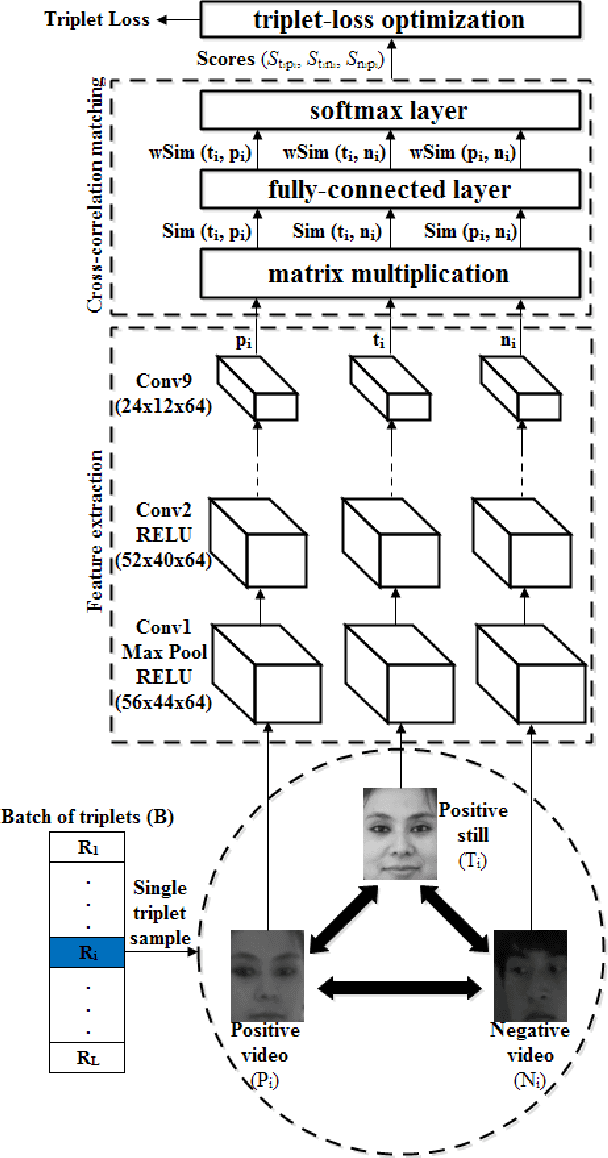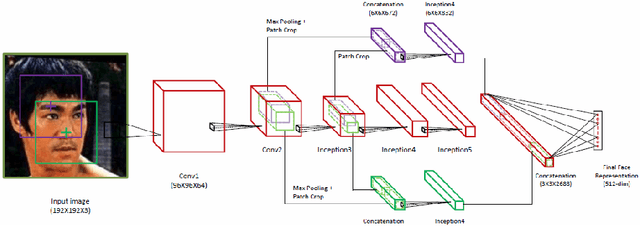Saman Bashbaghi
Deep Learning Architectures for Face Recognition in Video Surveillance
Jun 27, 2018



Abstract:Face recognition (FR) systems for video surveillance (VS) applications attempt to accurately detect the presence of target individuals over a distributed network of cameras. In video-based FR systems, facial models of target individuals are designed a priori during enrollment using a limited number of reference still images or video data. These facial models are not typically representative of faces being observed during operations due to large variations in illumination, pose, scale, occlusion, blur, and to camera inter-operability. Specifically, in still-to-video FR application, a single high-quality reference still image captured with still camera under controlled conditions is employed to generate a facial model to be matched later against lower-quality faces captured with video cameras under uncontrolled conditions. Current video-based FR systems can perform well on controlled scenarios, while their performance is not satisfactory in uncontrolled scenarios mainly because of the differences between the source (enrollment) and the target (operational) domains. Most of the efforts in this area have been toward the design of robust video-based FR systems in unconstrained surveillance environments. This chapter presents an overview of recent advances in still-to-video FR scenario through deep convolutional neural networks (CNNs). In particular, deep learning architectures proposed in the literature based on triplet-loss function (e.g., cross-correlation matching CNN, trunk-branch ensemble CNN and HaarNet) and supervised autoencoders (e.g., canonical face representation CNN) are reviewed and compared in terms of accuracy and computational complexity.
 Add to Chrome
Add to Chrome Add to Firefox
Add to Firefox Add to Edge
Add to Edge